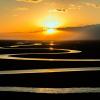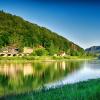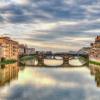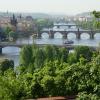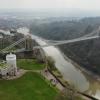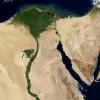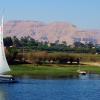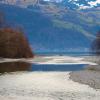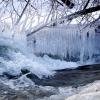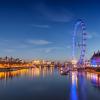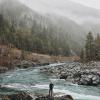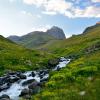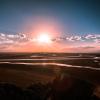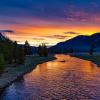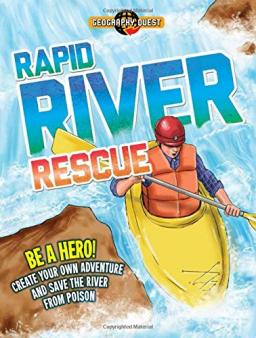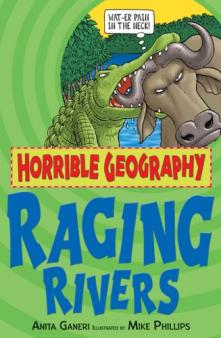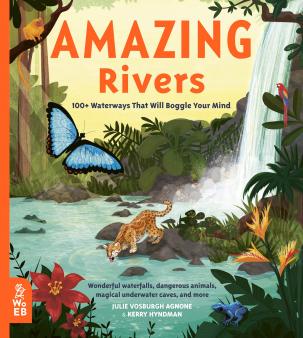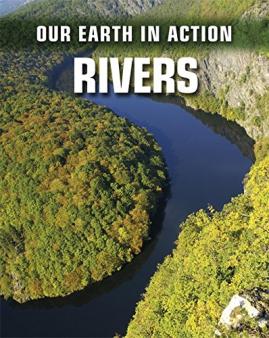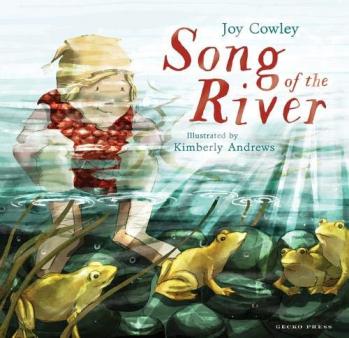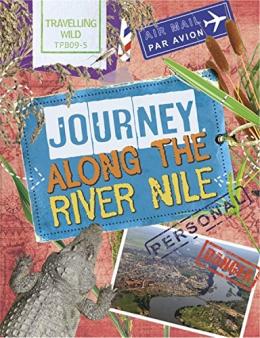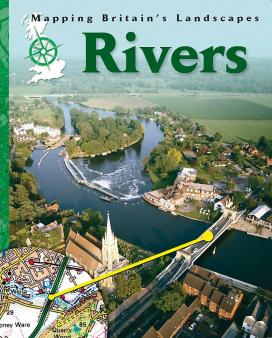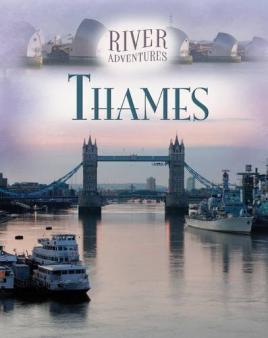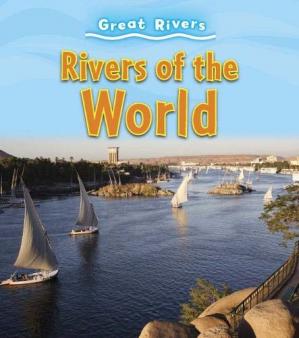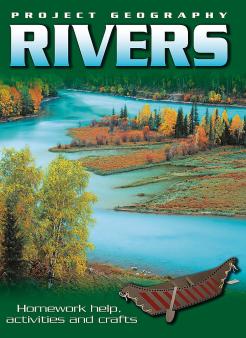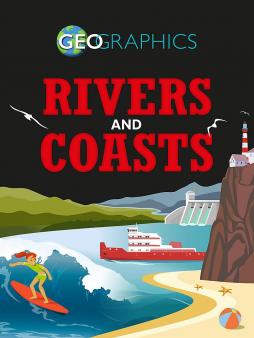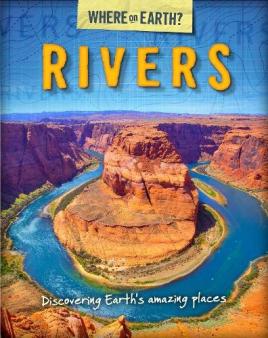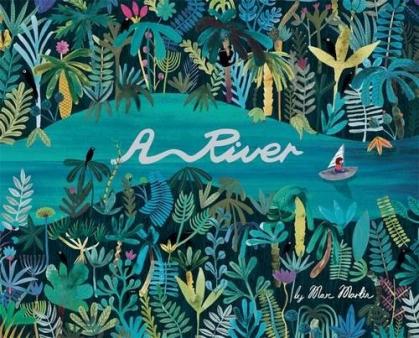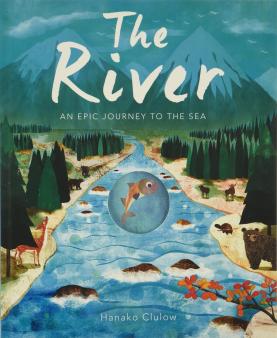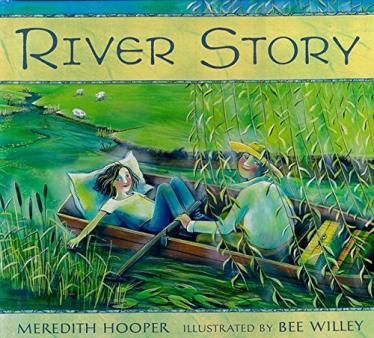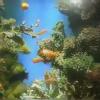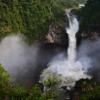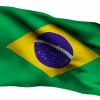Rivers
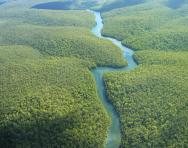
What is a river?
A river is the path that water takes as it flows downhill towards the ocean. Rivers can be long or short, wide or narrow and they often join together on their way downstream to make bigger rivers. Lots of animals live in or by rivers and people often find them a good place to live too.
Rivers can be used for lots of good things, like sailing boats on them to trade goods with other towns on the river, and farming on land that has been made fertile by the river, but when there are heavy rains and the river is very full they can be dangerous; rivers do a lot of damage when they flood.
Top 10 facts
- Rivers carry rainwater from hills downhill to other rivers, lakes or the ocean.
- The start of a river is called the source and the end is called the mouth.
- Many rivers and streams will join together before they reach the mouth of the river. The smaller rivers and streams are called tributaries.
- A fast flowing river will carry soil and dirt from its banks and bed downstream and drop them when it gets wider and slows down.
- When there is too much water in a river it floods and covers the area around it water. Sometimes this water is a deep as person or a house is tall.
- Floods cause a lot of damage but they also deposit nutrients from the water on the flooded land. This makes land that floods good for farming on.
- Rivers can be difficult and dangerous to cross. Towns often grow up where there are bridges or safe places to walk across.
- The longest river in the world is the Nile in Africa. It is 4,130 miles long.
- The longest rivers in Britain are the Severn (220 miles long) and the Thames (215 miles long).
- The river that carries the most water in the world is the Amazon in South America. The Amazon carries 210,000 cubic metres of water into the sea every second.

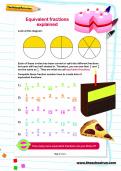
Boost Your Child's Maths & English Skills!
- We'll create a tailored plan for your child...
- ...and add activities to it each week...
- ...so you can watch your child grow in skills & confidence
Did you know?
- Water always flows downhill. When rain falls, it runs down the sides of hills into rivers in the bottom of the valleys between the hills. Rain and rivers are part of the water cycle.
- When it rains some of the water is absorbed into the soil and helps plants to grow, some of the water sinks deep into the ground and some of it flows into rivers and down to the sea.
- The end of a river is called the mouth. Some rivers flow into the sea but other rivers flow into lakes or bigger rivers.
- The start of a river is called the source. The source of a river is the furthest point on the river from its mouth.
- Many rivers are formed when rain flows down from hills but sometimes the source is a lake, sometimes it is a marsh or a bog and sometimes it is a spring where water comes up from the ground.
- When two rivers meet they will join together and form a single bigger river. Before a big river reaches the sea, it will be joined by lots and lots of smaller rivers. We call these rivers its tributaries.
- Most of the water we drink is taken out of rivers as they pass through our towns. We have to clean it first though, before we can drink it.
- When rivers are flowing fast, they knock bits of earth from the banks and bed of the river (its sides and bottom) and carry it downstream with them. When earth is taken from the banks of the river this is called erosion, and the soil that is carried downstream is called silt.
- When the weather is rainy for a long time, the ground will become waterlogged and not be able to absorb any more water. This means that all the water has to flow into the rivers. But, there may be too much water for the rivers to take, which means they overflow and flood the land around them.
- We call the area of land around a river that floods when the river is too full the ‘floodplain’.
- When a river floods the water on the flooded land is moving very slowly and can’t carry the silt in it any longer. The silt is deposited on the flooded land and gives it a lot of nutrients that make the land good for farming crops.
- When rivers reach the sea, they often spread out over a wide area and slow right down. This part of the river is called the estuary. This means that they can’t carry any of their silt any more so they drop it all onto the base of the river and into the edge of ocean. Sometimes rivers carry so much silt that when they drop it, it builds a new area of land at the edge of the ocean called a delta.
- The water in the ocean is called ‘salt water’ because it is full of salt, but water that falls as rain and flows down the rivers to the sea doesn’t have any salt in it and is called ‘fresh water’.
- You can find all sorts of fish and birds and many other kinds of creatures living in water. Some creatures that live in water like both fresh water and salt water, but some creatures only like to live in fresh water rivers and lakes and some only like to live in salt water (marine habitats).
Look at the gallery below and see if you can spot all the following:
- A meandering river
- The river Elbe
- The Arno in Florence, Italy
- Prague
- The Clifton Suspension Bridge in Bristol
- An aerial view of the Nile in Egypt
- A sailboat on the Nile
- A river estuary
- A river in winter
- The river Thames in London
- A mountain river
- A river source
- A river curving over a prairie landscape
- Yellowstone National park in the USA
Gallery
About
When a lot of rain falls in a short time, the ground can’t always absorb it quickly enough. This means that lots more water than normal flows into the rivers. If there is more water than the river can carry away to the sea, it bursts over its banks and floods the land around it. This is called a ‘flash flood’ because it happens so quickly.
There aren’t always many safe places to cross a river on foot, and building bridges was hard for people before they had modern machines. Anyone going on a journey would have to cross a river at the same place as lots of other people. Towns would often grow up around these places so that travellers could find a place to sleep or trade goods with each other.
The mouth of a river also used to be a very good place to build a town. Large boats that cross the sea to other countries can sail into the mouth of the river to unload their cargo and to load local produce to take elsewhere. Small boats can sail up and down the river taking goods to and from the towns that are further inland.
Lots of towns are named after river crossings or the rivers that flow through them. Oxford is named after a ford where people used to take their oxen across the river Thames. Stourbridge is a town in the West Midlands where there is an old bridge over the river Stour. Dartmouth in Devon is town at the mouth of the river Dart. How many towns in your area are named after rivers or river crossings?
The Welsh word for a river mouth is ‘aber’. Many towns in Wales are named after the rivers that they are on, just as they are in England. Aberystwyth is town at the mouth (aber) of the river Ystwyth.
The faster a river flows, the more erosion it causes in the soil and rocks around it. Over millions of years streams and rivers will remove more and more material from the area around them and cut bigger and bigger paths for themselves. This is how valleys are created. Even quite small streams can create big valleys over a long time.
When the slope that rivers are flowing down stops being so steep, rivers slow down and instead of rushing down the straightest path through the valley, they often start to curve and bend. These curves are called meanders.
Erosion on the bends of the meanders means that they are slowly changing shape and that path the river takes will gradually change. Sometimes the erosion will cut a straight path for the river to take and leave what used to be a bend isolated from the river. This is called an ‘ox-bow lake’.
Sometimes to make it easier to for boats to travel up and down rivers, people change the way that the river flows. If part of a river is very bendy, they might dig a straighter channel for the river to flow down so that the boats don’t have to make tight turns. Sometimes they make the river wider or make it deeper so that bigger boats can travel on it. When the river is too steep and flows to fast, they might put in locks to make it safer for the boats to travel.
Rivers have also been used for a long time to help people work equipment. People would build mills to grind corn and grain near to rivers so that they could use a water wheel to work the mill. The bottom of the wheel would be put into the water, and when the water turned the wheel, the wheel would make the equipment in the mill turn and grind up the grain.
Today, instead of using a wheel to operate equipment, we build big dams across the rivers and use the force of the water to turn turbines and generate electricity to power our machines. We call this hydro-electricity because it is generated from water.
Words to know:
Bank – The riverbank is the land at the side of the river.
Basin – Rainwater that falls on hills flows down the side of the hills into rivers. A river basin the group of hills, valleys and lakes that water flows into the river from.
Bed – The bed is the bottom of a river. A riverbed can be made of sand, rocks or mud depending on the river.
Canal – A man-made waterway that is used so that boats can transport goods across bits of the country where there are no rivers they can use.
Current – The strength and speed of the river. Water always flows downhill; the steeper the ground is, the stronger the current will be.
Delta – A wide muddy or sandy area where some rivers meet the sea. The river slows down and drops all the sediments it was carrying.
Downstream – The direction that the water flows, downhill towards the sea
Fresh water – Rainwater that falls from the sky has no salt in it. We call this fresh water.
Erosion – When a river flows fast it damages the riverbanks and washes bits of them downstream. This makes the river wider.
Estuary – Where a river reaches the ocean and the river and ocean mix. Estuaries are normally wide and flat.
Floodplain – The flat area around a river that often gets flooded when the level of water in the river is high.
Mouth – The end of a river where it flows into the sea, another river or a lake.
Salt water – The water in the sea is full of salt, so ‘salt water’ refers to water in seas and oceans.
Silt – Small bits of dirt or sand that are carried along by a river.
Source – The start of a river is its source. This could be a spring on a hillside, a lake, or a bog or marsh. A river may have more than one source.
Stream – A small river
Tidal river – At the end of a river, near the ocean, water from the sea flows up the river when the tide comes in. This bit of the river is called ‘tidal’.
Tributary – A smaller river or stream that joins a big river is called a tributary.
Upstream – The opposite direction to the way the water in a river flows
Watershed – Water flows down the side of hills into rivers. But, water that lands on opposite sides of the same hill might flow into different rivers. The watershed is the boundary between two river basins.
Related Videos
Just for fun...
- Can you name the rivers on an interactive world map?
- Complete some river activity sheets
- See otters, kingfishers, herons and dippers on wildlife presenter Simon King's live river webcam
- Build a canal in an interactive game
- Play All Star River Explorers to find out more about how rivers are formed
- Take a virtual field trip into a west coast estuary with an online game, Where Rivers Meet the Sea
- Complete the Rivers World Map game
- Show off your rivers knowledge with a quiz
- Make your own river models
Children's books about rivers
Find out more:
- An annotated guide to rivers for children
- Find out more about river flooding
- Watch a short BBC Teach film about rivers which describes the journey of a river from its source to its end, looking at some of its different features including rapids, waterfalls, and meanders
- Discover the unseen world in a river
- Look at river diagrams and see amazing river photography
- National Geographic rivers information and pictures
- Watch some BBC Schools video clips about the river Nile, the river Severn and the river Tay
- Design a bridge, understand how rivers are used and find out why authors, poets and artists are inspired by rivers with the British Council's Rivers of the world information pack for kids and the accompanying rivers video guides
See for yourself
- Listen to the sounds of the North Tyne river
- Visit the Waterways Museum in Gloucester to learn more about rivers and canals
- See the National Waterways Museum in Cheshire
- Take a walk along your local river and see all the wildlife along it!
- Visit the River & Rowing Museum in Henley
- Hear the sound of a river and the sound of a creek
Also see

Give your child a headstart
- FREE articles & expert information
- FREE resources & activities
- FREE homework help
